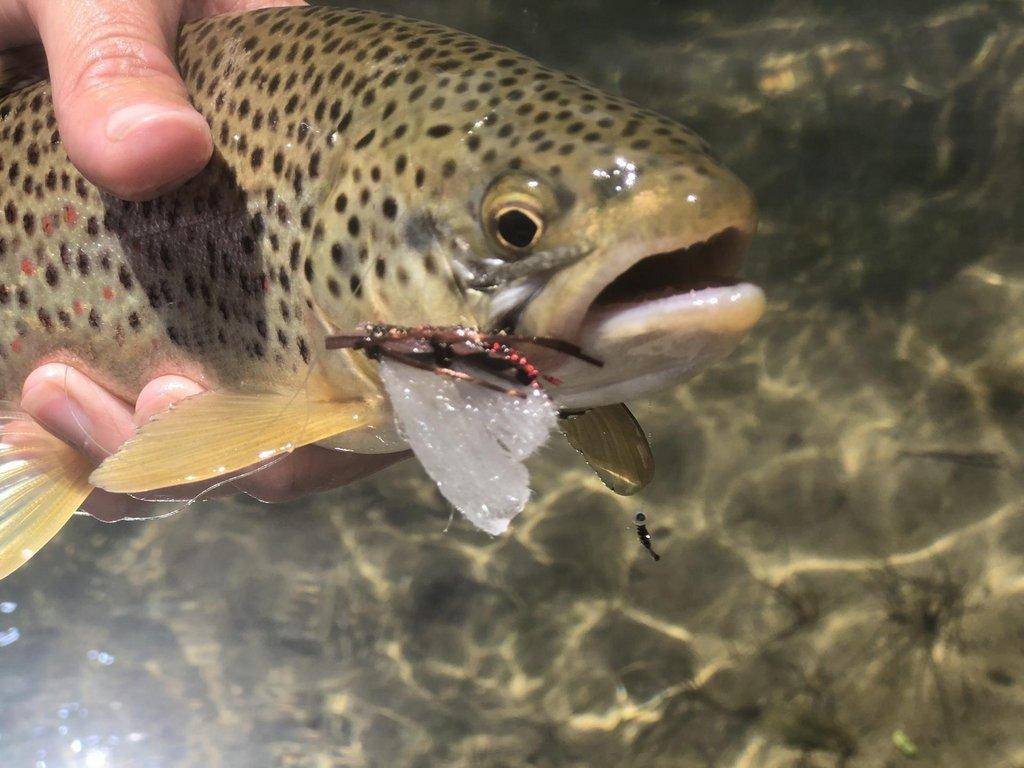DWR News Release
If you have been to Jones Hole Creek, you are familiar with its towering landscape, tranquil waters and lush trees lining the riverbanks, which makes it a great place for fishing. Just a few miles away, the creek flows directly into the Green River, where whirling disease was first discovered in 2011. Unfortunately, the disease has now been confirmed in fish in Jones Hole Creek as well, including adjacent to the Jones Hole National Fish Hatchery.
Whirling disease
Whirling disease is a condition in fish caused by an invasive microscopic parasite. It was first discovered in Utah in 1991 and primarily affects trout and salmon species, especially small rainbow trout. The disease attacks the cartilage tissue of a fish’s head and spine. If sufficiently infected, young fish may develop symptoms such as the characteristic whirling behavior, a black tail or even death. If they survive, fish may develop neurological damage or skeletal deformities. The disease does not affect or harm people.
Efforts to decrease the spread
The Jones Hole National Fish Hatchery is located just 40 miles northeast of Vernal. It is owned and operated by the U.S. Fish and Wildlife Service and sits adjacent to Jones Holes Creek. In 2017, the U.S. Fish and Wildlife Service began sampling fish in the lower reaches of Jones Hole Creek on an annual basis to monitor for the diseases’ presence in the creek. Unfortunately, in January, rainbow trout samples that had been taken from locations in the creek tested positive for whirling disease. However, all the samples taken from the fish hatchery have been negative thus far, and the hatchery fish have not been infected. Additionally, brown trout sampled from the creek all tested negative for the disease.
“Fortunately, the fish hatchery does not receive any of its water from the creek, which has helped decrease the spread of whirling disease to the fish in the facility,” Travis Anderson, acting hatchery manager, said. “The water for the hatchery is piped underground from nearby springs, located just east of the creek on hatchery grounds. When we were first notified of the positive whirling disease sample results, we installed a temporary fish barrier at the downstream end of our flood bypass channel. This should help prevent potential whirling disease-positive fish from moving upstream into the bypass channel and Diamond Gulch pond, which are immediately adjacent to the hatchery.”
How can you help prevent the spread of this disease?
In order to keep the disease from spreading to other nearby streams and into the fish, the Utah Division of Wildlife Resources and the U.S. Fish and Wildlife Service is asking anglers to do the following:
- Do not fish the creek above the fishing closure signs adjacent to the hatchery. Fish have been removed from this location.
- Avoid using felt-soled wading boots. These boots are more likely to transport the parasite that causes whirling disease to other waterbodies. To get more traction in your waders, anglers can purchase studs for their wader boots.
- After getting out of the creek, rinse all mud and aquatic plants from your boots, waders, and other equipment. Let all the equipment dry in the sun for a few days before using them again.
- Do NOT transport fish, water or fish parts from this creek to other waters. Fish, dead and alive, can contain spores of the parasite that causes whirling disease.
- Do NOT enter any other waterbody until you have thoroughly cleaned all your fishing equipment.
If you have questions about whirling disease at Jones Hole Creek, call the DWR’s Northeastern Region office at (435) 781-9453.

